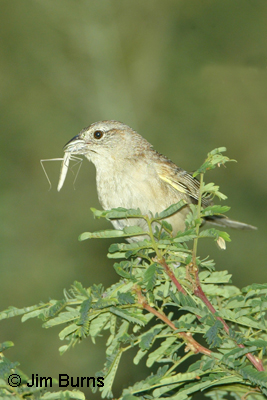
Our monsoon season is known to the birds and to veteran birders as our "second summer." Because of Arizona's moderate climate, many low desert species familiar to Phoenicians--hummingbirds, verdins, wrens, and thrashers --begin nesting as early as February. That's springtime in the Valley, alive with the sound of males in territorial song and the sight of females scurrying about with nesting material.
Many migrants and some resident species of the state's higher elevations--hawks, flycatchers, vireos, and warblers--nest during the more traditional calendar spring, April and May. June, often the driest month of the year and the month with the most consistently triple digit temperatures, is one of the least exciting months for birds and birders alike. Nesting is over and bird activity drops off completely by mid-morning in the summer heat. The monsoon and the vegetation it spawns change all that. The onset of our summer rain triggers insect hatches and hormonal changes that tell many Arizona birds the food supply will be sufficient to produce a second brood. Even more importantly, some of our most interesting and widely sought species wait for this "second summer" to nest for the first time.
Species that raise two families include desert and riparian birds of central Arizona such as vermilion flycatcher, blue grosbeak, thrashers and orioles. Painted redstart and western tanager are mountain species that nest twice, but our "black cardinal", the phainopepla, has the most interesting strategy of all, breeding first in desert mesquite bosques, then moving to a completely different, higher habitat, oak/chaparral foothills, to raise a second family during the second summer.
For many of Arizona's famous special species, breeding doesn't begin at all until the summer rains, and in poor monsoon years these species become more difficult to find. Montezuma quail, yellow-billed cuckoo, the elusive grassland sparrows such as Botteri's, Cassin's and rufuous-winged, and the beautiful varied bunting are birds which draw visitors here from all over the country just when many residents are desperately trying to get out of the second summer humidity.
Two separate breeding seasons mean two separate times of the year when out-of-state birders flock to Arizona. It's good biology. It's good for the economy. It's good for your sanity because it's one reason to look forward to the monsoon season. The birds do. You should be out there right now looking for them.